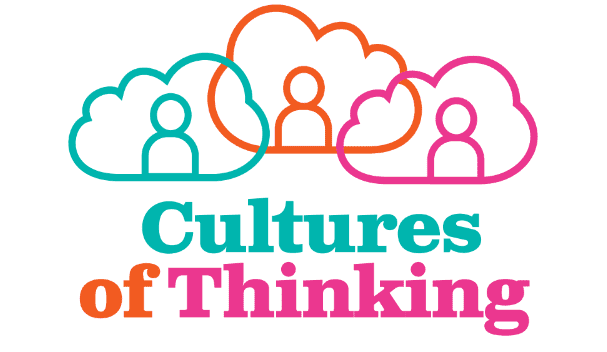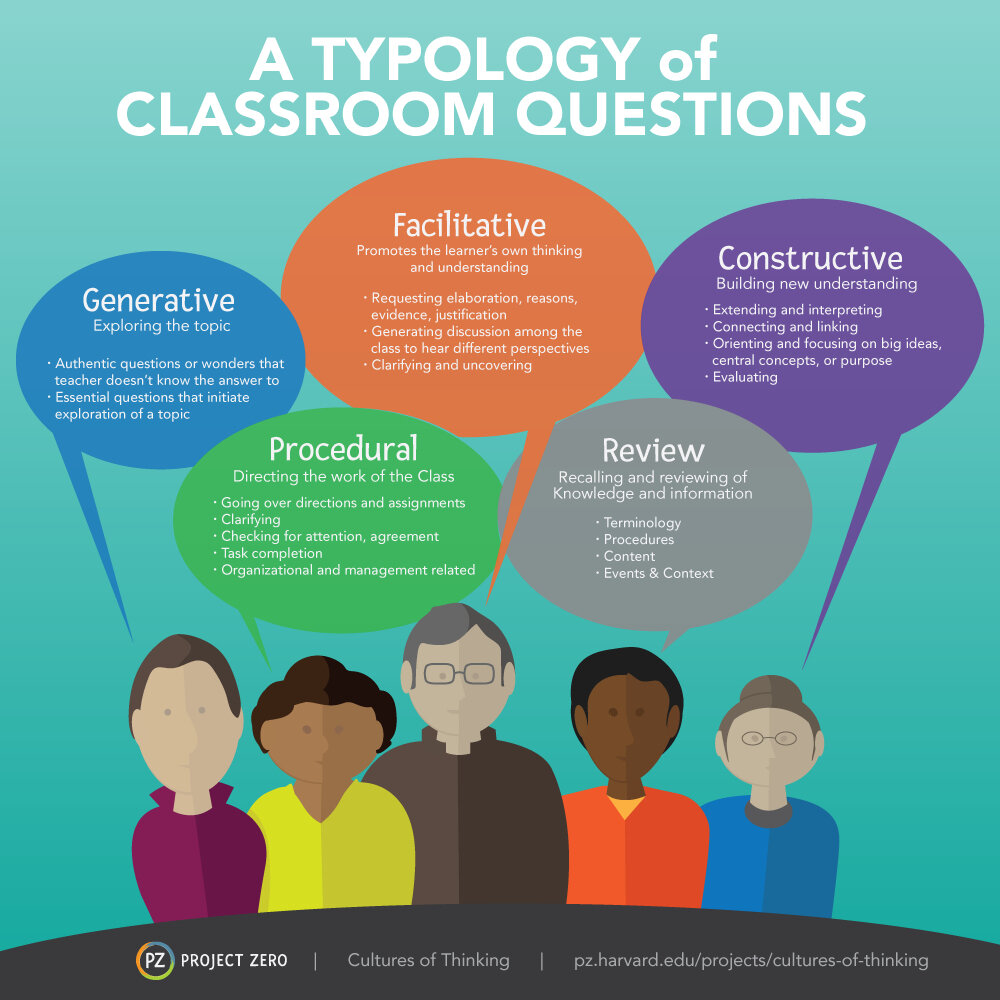
Cultures of Thinking Summit
Leading a Culture of Thinking Summit
February 1-2, 2025
Two-day summit: $995
Looking, Learning and Leading in a Culture of Thinking: A Deep Dive
February 3, 2025
Two-day summit plus classroom observation and lab day: $1,395
Del Mar, California
Trevor MacKenzie
Teacher, Author, Keynote Speaker, & Inquiry Authority
Exploring the Inquiry Mindset: Cultivating Cultures of Curiosity
January 30 & 31, 2025
Atlanta, GA

Dr. Ron Ritchhart
Ron Ritchhart, Ed.D, is an award-winning teacher and researcher, a sought-after speaker, and a prolific and influential writer. Ron began his career in education as an elementary teacher in New Zealand before returning to the states where he taught art, third, and fourth grades, and middle school mathematics before commencing his career as an educational researcher. Ron spent over 25 years at Harvard Graduate School of Education’s Project Zero, where his work focused on the development of school and classroom culture as prime vehicles for developing students’ as powerful thinkers and learners. His research has always been classroom-based, learning from the best practice of teachers to better understand how they create conditions for powerful learning.
Ron’s work has informed the efforts of schools, school systems, and museums throughout the world as they seek to foster more creative, engaged, and thoughtful learners.
Though recently retired from Harvard, Ron continues his research, writing, and teaching. His best-selling books include Intellectual Character, Making Thinking Visible, Creating Cultures of Thinking, and The Power of Making Thinking Visible. His most recent book, Cultures of Thinking in Action, was published in 2022.

Mark Church
Mark Church works with educators throughout the world striving to create cultures of thinking in their classrooms and schools. Mark challenges teachers to foster thinking dispositions in students in service of deep understanding. He invites teachers to promote a discourse of thinking in their classrooms that communicates value for student sense-making. Mark encourages teachers to make their classroom environments rich with the documents of student thinking processes.
Mark is currently a consultant with Harvard Project Zero’s Making Thinking Visible and Cultures of Thinking initiatives worldwide, drawing upon his own classroom teaching experience and from the perspectives he has gained working with educators throughout North America, Australia, Asia, and Europe. Mark enjoys helping teachers examine opportunities for student thoughtfulness, use thinking routines as supports and scaffolds, interact with students in ways that demonstrate interest in and respect for students’ thinking, and send clear expectations about the importance and value of thinking in learning. Together with Ron Ritchhart and Karin Morrison, Mark is co-author of the book Making Thinking Visible: How to Promote Engagement, Understanding, and Independence for All Learners (Jossey-Bass, 2011).

Ron Ritchhart, Ed.D, is an award-winning teacher and researcher, a sought-after speaker, and a prolific and influential writer. Ron began his career in education as an elementary teacher in New Zealand before returning to the states where he taught art, third, and fourth grades, and middle school mathematics before commencing his career as an educational researcher. Ron spent over 25 years at Harvard Graduate School of Education’s Project Zero, where his work focused on the development of school and classroom culture as prime vehicles for developing students’ as powerful thinkers and learners. His research has always been classroom-based, learning from the best practice of teachers to better understand how they create conditions for powerful learning.
Ron’s work has informed the efforts of schools, school systems, and museums throughout the world as they seek to foster more creative, engaged, and thoughtful learners.
Though recently retired from Harvard, Ron continues his research, writing, and teaching. His best-selling books include Intellectual Character, Making Thinking Visible, Creating Cultures of Thinking, and The Power of Making Thinking Visible. His most recent book, Cultures of Thinking in Action, was published in 2022.

Mark Church works with educators throughout the world striving to create cultures of thinking in their classrooms and schools. Mark challenges teachers to foster thinking dispositions in students in service of deep understanding. He invites teachers to promote a discourse of thinking in their classrooms that communicates value for student sense-making. Mark encourages teachers to make their classroom environments rich with the documents of student thinking processes.
Mark is currently a consultant with Harvard Project Zero’s Making Thinking Visible and Cultures of Thinking initiatives worldwide, drawing upon his own classroom teaching experience and from the perspectives he has gained working with educators throughout North America, Australia, Asia, and Europe. Mark enjoys helping teachers examine opportunities for student thoughtfulness, use thinking routines as supports and scaffolds, interact with students in ways that demonstrate interest in and respect for students’ thinking, and send clear expectations about the importance and value of thinking in learning. Together with Ron Ritchhart and Karin Morrison, Mark is co-author of the book Making Thinking Visible: How to Promote Engagement, Understanding, and Independence for All Learners (Jossey-Bass, 2011).
The Inaugural Cultures of Thinking Summit, hosted by the Del Mar Union School District in Southern California, offers a unique opportunity to engage with colleagues in an in-depth exploration of the tools, frameworks, and mindsets essential to fostering a culture of thinking.
In 2025, the Worldwide Cultures of Thinking Initiative marks two decades of dedicated research and development. Over the years, our understanding of how to create schools and classrooms where thinking is valued, visible, and actively promoted has evolved significantly. By working with a diverse range of schools, we’ve not only gained insights into effective tools and practices for supporting deep thinking, but also learned how to help teachers develop skills to use these tools to maximum effect. Our knowledge base spans classrooms worldwide, from early childhood to university settings. We’ve also identified key mindsets that must be nurtured to truly foster classroom transformation. Throughout the years, what has remained steadfast is our commitment to fostering students as powerful learners and thinkers. It is no surprise that schools dedicated to fostering a culture of thinking graduate successful students who feel confident and prepared to tackle their future.
Whether you’re new to this approach or more experienced and looking to lead and deepen a culture of thinking at your school, the CoT Summit provides valuable professional learning to meet you where you are. The event will feature insights from best-selling authors Ron Ritchhart and Mark Church. In addition, you’ll have a chance to engage with and learn from stories of practice and innovation of teachers and leaders nationwide who have deeply engaged with these ideas so that you too can take the next steps you need to transform your own practice. At the CoT Summit you will learn to:
- Leverage the eight cultural forces to shift the culture of your classroom and school.
- Focus your mindsets around thinking and learning to drive instruction that engages all students
- Make dynamic use of thinking routines to encourage deeper learning and make students’ thinking visible
You will “learn by doing’ as you try out coaching tools, structures, and protocols designed to help teachers create a culture of thinking for themselves and their colleagues. In addition, attendees on Monday will have the chance to visit classrooms and witness a culture of thinking in action, while using tools designed to spark close looking, focused observation, and deep reflection.
Because creating cultures of thinking is not a one-time training program but an ongoing commitment to making thinking and deep learning central to education, the 2025 CoT Summit will launch a network to support ongoing learning and development for teachers, coaches, and school leaders.
Join us in this transformative journey.


